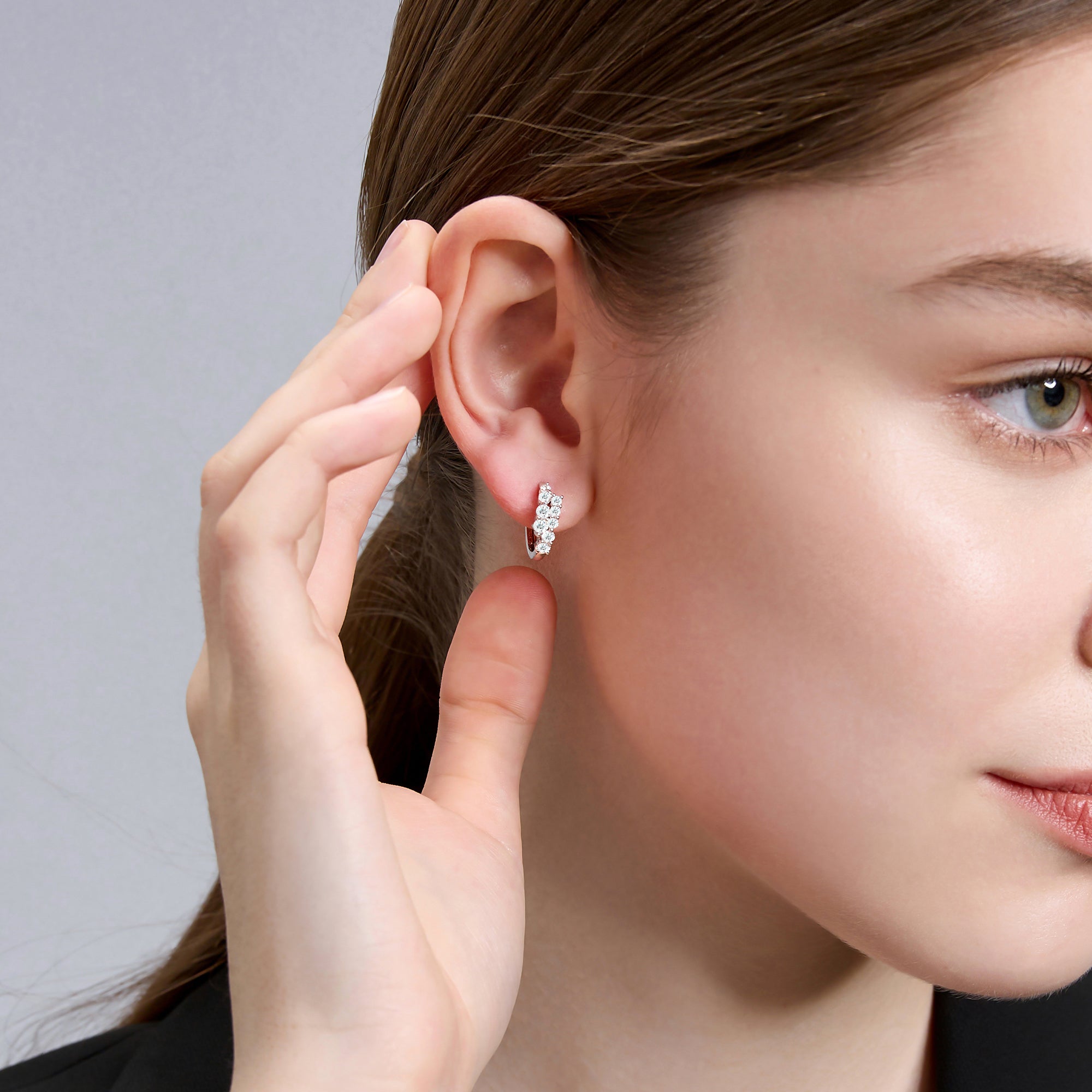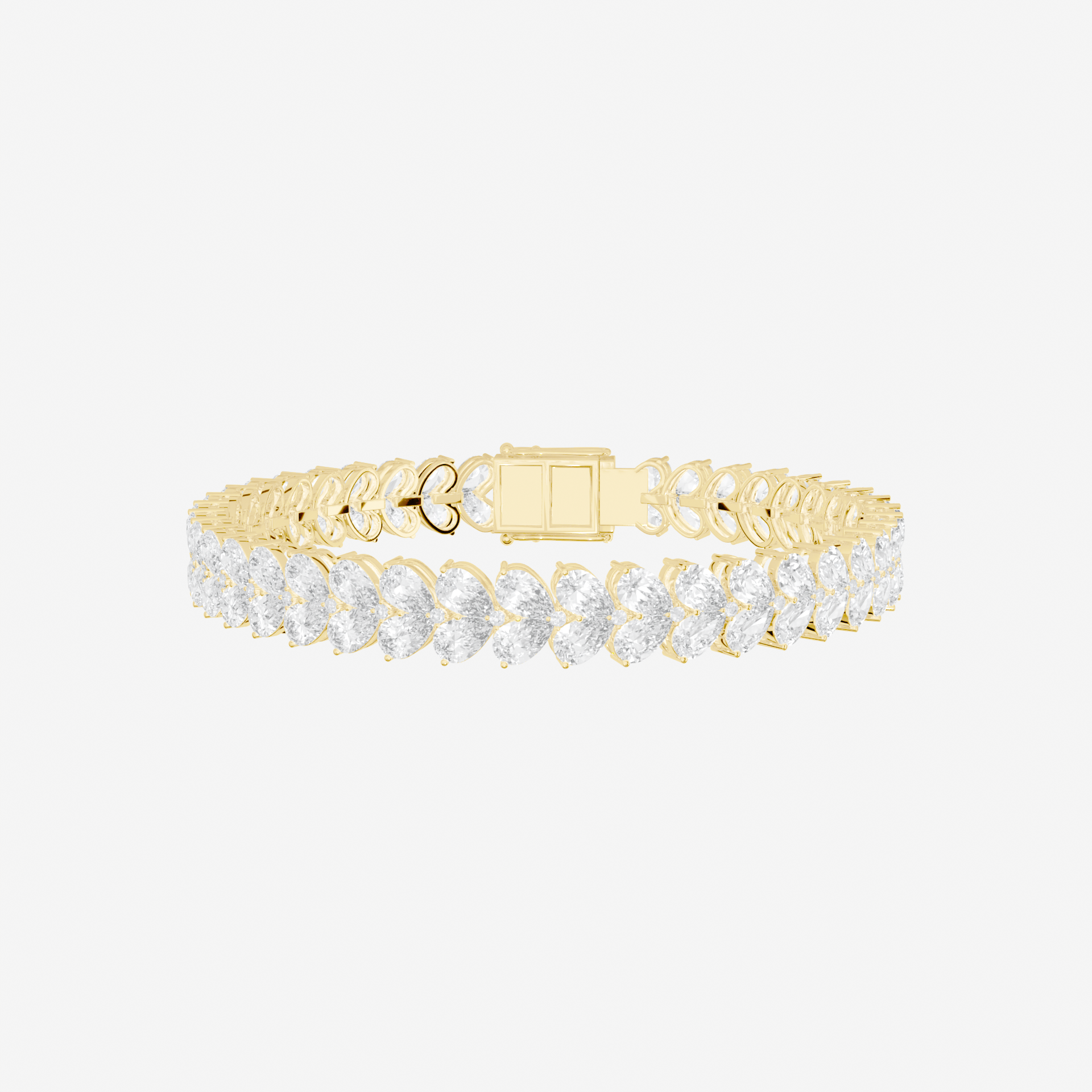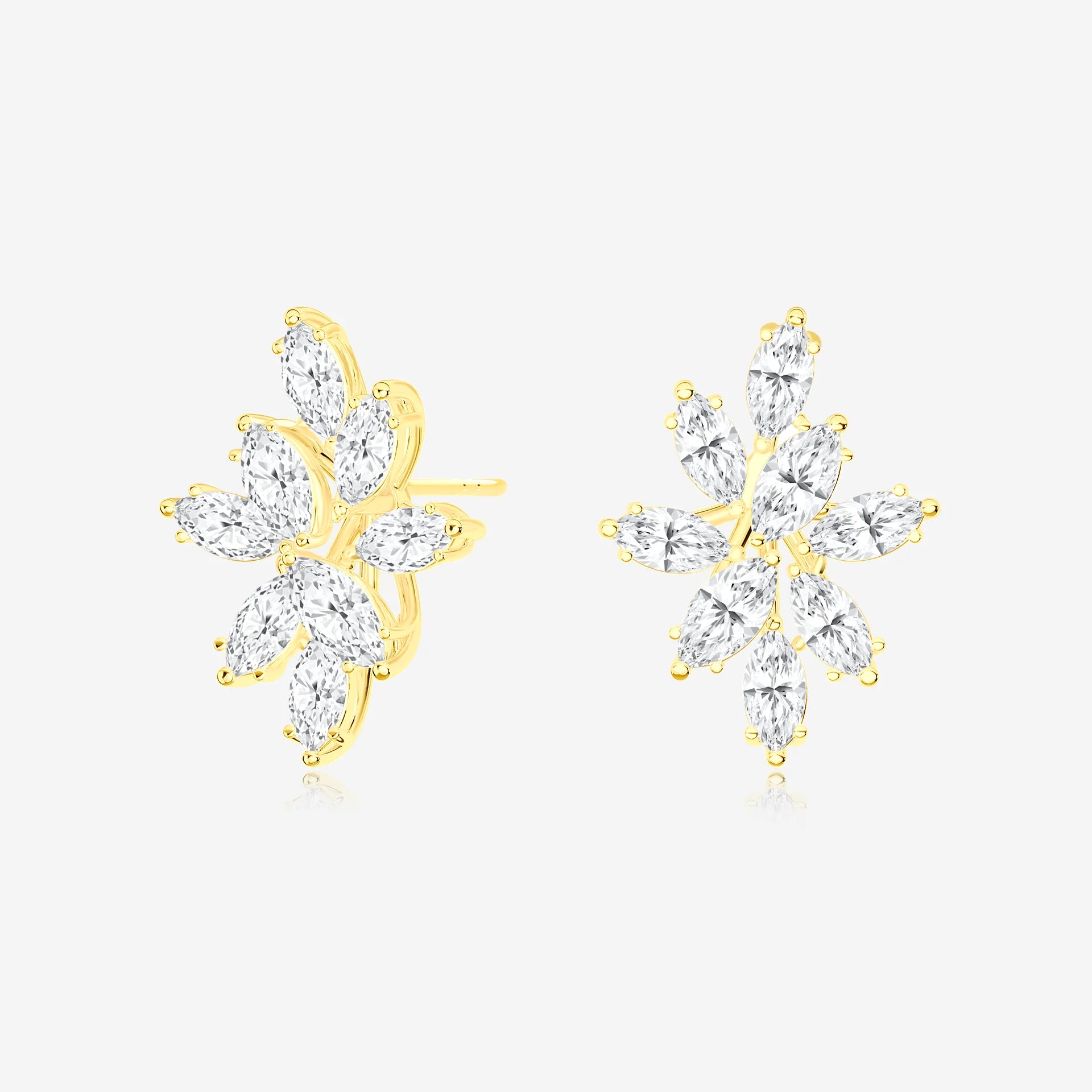Browsing dazzling jewelry displays, the iconic 14K or 18K gold purity stamps denote lasting value beyond ephemeral trends. But the alternate karat marks harbinger deeper distinctions between expected wearability, skin tolerances, color aesthetics, and budget factors worth weighing.
Before investing in an expression uniquely you, let's unlock the considerations distinguishing 14K and 18K gold jewelry metals as informed ambassadors of style through the decades.
| Aspect | 14K Gold | 18K Gold |
|---|---|---|
| Gold Purity | 58.3% gold (14 parts gold to 10 parts alloy) | 75% gold (18 parts gold to 6 parts alloy) |
| Color Depth | Subtler gold hue | Vibrant yellow gold tones |
| Durability | More durable, suitable for daily wear | Less durable, suitable for occasional wear |
| Skin Sensitivity | Potential irritant due to higher alloy content | Hypoallergenic due to higher gold purity |
| Price Consideration | More budget-friendly | Generally more expensive |
| Recommended Use | Everyday jewelry with intricate designs | Luxury jewelry worn on special occasions |
| Alloy Impact | Added strength from alloys; may affect color/tone | Less alloy; richer color but softer metal |
Gold Purity Fundamentals
Gold's natural luster and nobility convey special meaning transcending mere commodity - yet the metal alone remains too pliable for crafting lasting mementos marking occasions of significance without the incorporation of supplementary alloys. These added components bolster structural resilience through intended usage cycles while also potentially influencing aesthetic characteristics.
The karat metric quantifies gold's relative purity benchmarked against 24K as 100% pure content. So 14K gold contains 14 parts gold to 10 parts hardy alloys, calculating a 58.3% gold composition. Meanwhile 18K gold comprises 18 parts gold to only 6 parts alloys, totaling 75% pure gold. Now with the basics covered, let's contrast how metallic differences manifest.

Comparing Gold Content Differences
With 18K gold's higher gold concentration of 75% purity compared to the larger abundance of alloy metals comprising 42% in 14K blends, key variations emerge influencing lasting property performance:
Richer Color Depth
Due to lesser interfering alloy incorporation diluting its signature radiance, 18K gold metals unlock particularly vivid yellow gold tonality aligned closely with people's traditional perceptions of gold's gleaming properties. The heightened purity enables exhibitions of luxury luminosity not as much present to the same degree in 14K metals, which exchange some innate light character for increased alloy-derived structural soundness. Therefore, for individuals prioritizing aesthetically accurate gold reflections first, 18K gold more reliably delivers lustrous true yellow energy worth the premiums.
Enhanced Visual Softness
Inevitable tradeoffs accompany elevated purity like 18K gold's noble attempt to balance amplified gold incorporation rates chasing coveted optic intensity goals with retaining adequate integral structural soundness necessary for jewelry durability and shaping. For example, the woven metal needs enough malleability to conform to ornate ring band curvatures or chain segment linkages, while avoiding overly weakened states. Consequently, exceptional 18K gold occupies the pinnacle balancing light handling against essential minimum resilience. Meanwhile, 14K gold ensures reinforced at the occasional cost of subtler shine.

Durability and Recommended Usage Contrasts
Ideally, beloved jewelry seamlessly intertwines symbolic meaning alongside convenience safely carrying those personal memories through daily adventures rather than requiring special treatment or worrying over damage from average wearing thresholds. So let's further examine the ideal jewelry applications suited for each metal's durability factors:
14k Gold Metals:
Fourteen-karat gold incorporates higher alloy blending ratios which enables intentionally strengthened architectural stability well-equipped for wearing intricate yet durable everyday jewelry like diamond engagement rings or embellished religious crosses designed to honor faith values under routine conditions without compromising. The enhanced innate robustness provides confidence these special 14K gold statement and sentimental pieces can withstand consistently being proudly worn as part of one's personal signature style while reassuring they'll endure inadvertent minor life scuffs over decades without betraying the deeper meaning behind them.
18k Gold Metals:
While 18K gold metals make slight structural compromises on pure durability benchmarks by retaining more heightened gold purity levels targeting visual luminosity captivation goals, the dazzling and dimensional 18K gold aesthetic absolutely still confidently shines its best when worn gently and cherished well–like family heirloom jewelry lightly worn solely during momentous gatherings and Photo-worthy special occasions when the resplendent gleaming luxury takes center stage. For low-impact lifestyles not subjecting jewelry to continual exposures, or as statement piece investments deliberately spotlighted only selectively, 18K gold makes for sophisticated symbols of meaning where brilliance atmospherics take priority over ruggedness.
How Specialization Optimizes Appeal
Beyond baseline structural augmentations, customized alloys also introduce desired tints and textures aligned to specialized aesthetic visions:
- Alloying for Colors- The specific supplemental metals incorporated altered resulting colorations, spanning yellow, white, and rose gold hues. Nickel, zinc, and copper infuse glinting silver for white gold. Meanwhile rose gold comes from copper alloys.
- Textural Impacts- Surface glossiness and hardness also get fine-tuned through alloy adjustments. Brighter buffed finishes nicely contrast matte Hammered metal textures with glinting dimension. The possibilities stay boundless.
How to Factor Skin Sensitivities
The improved resilience from higher alloy contents in 14K gold that optimizes jewelry shaping also potentially introduces skin sensitivity risks worth evaluating:
- Common Allergens - Nickel constitutes the most prevalent contact allergen, with copper and cobalt also spurring reactions for susceptible individuals that grow worse over continual exposure timeframes.
- Higher Karat Safety- The heightened gold purity concentration accompanying 18K metals minimizes irritating alloy components. So for known skin sensitivities, 18K gold provides friendlier accommodations reducing redness or discomfort likelihoods from wearing.
Always confirm actual allergy testing outcomes before entirely limiting gold jewelry options, which may produce unexpected tolerance results. But weigh skin reactions among discriminator factors.
Purchase Budgeting Considerations
While personal meaning eclipses price quotas, financial factors still influence selection criteria balancing splurge savings against value density. Here's how gold purity fits budgeting:
- Pricing Complexities- Straightforward logic assumes 18K premiums over 14K equivalents. However, beyond intrinsic gold concentrations, intricate craftsmanship, custom embellishments, and market rarities interplay pricing lots of jewelry higher than pure gold contributions alone.
- Wise Investments- Carefully evaluate expected item longevity given individual wearing habits against upfront expenses during comparison shopping. Symbolism lasts generations, but regularly replaced jewelry nullifies prized value. Weigh usage and care commitments to inform wise investments.
18k vs. 14k Gold Decision
| Aspect | 18K Gold | 14K Gold |
|---|---|---|
| Gold Content | Vibrant yellow gold tones from higher gold content | Subtler gold hue from abundant alloys |
| Hypoallergenic | Yes, for many with metal sensitivities | Potential irritant if metal allergies present |
| Optimal Usage | Occasionally worn luxury jewelry | Everyday jewelry with intricate designs |
| Durability | Lower, requires gentle care | Higher, resists small dents |
| Price | Generally more expensive | More budget-friendly |
| Luxury Positioning | Higher prestige | Lacks prestige positioning among luxe categories |
| Insurance Consideration | Recommended due to value | Lesser need compared to 18K |
When deciding between 14K and 18K gold, first acknowledge the inherent tradeoff balancing pristine gold purity desires against resilience afforded through sturdy alloy fortification. Once this foundational spectrum is dynamic, delving into further comparison exploration helps match individual needs and preferences.
Key Advantages of 18K Gold:
- Vibrant yellow gold tones from higher gold content
- Hypoallergenic for many with metal sensitivities
- Optimal for occasionally worn luxury jewelry
Considerations with 18K Gold:
- Lower durability for everyday knocks and abrasions
- Requires gentle care handling to preserve structural integrity
- Consider insurance protection given value status
- Generally costs more than 14K pieces
Key Advantages of 14K Gold:
- Improved resilience and hardness for recurring daily wear
- Additional alloy fortification resists small dents
- Intricately embellished designs retain shape
- More budget-friendly initial pricing
Considerations with 14K Gold:
- Subtler gold hue from abundant alloys
- Potential skin irritant if metal allergies present
- Lacks prestige positioning among luxe categories
With detailed advantages and appropriate selection for lifestyle factors in mind, may we match expectant wearing purposes with ideal gold karat properties suiting individual needs.

How to Decide Between 14K and 18K Gold
Arriving at personalized verdicts requires honest dialogues weighing individual lifestyle factors and values directing jewelry metal selections:
Occupational and Activity Hazards
Consider if your professional or recreational hands-on intensities entail notable exposures directly risking dents or distortions softening softer 18K gold metals. Do you work extensively with machinery or tough materials an heirloom promise ring might unintentionally scrape against? Similarly, do outdoor hobbies subject jewelry to scratches or potential stress damage?
Sensitive Skin Health History
Take into account if you or relevant gift recipients have battled any metal allergies in the past potentially triggered by alloys that result in painful skin reactions that grow continually worse over timeframes from ongoing irritant contact. Have lighter 14K gold pieces previously raised soreness risks you deem too discomforting for a lifetime keepsake?
Individual Aesthetic Preferences
Lastly but essentially, carefully contemplate your (or the intended jewelry customization vision) most beloved desired visual properties like atmospheric gleaming hues, textural dimensions, and color integrity goals to determine which karat formulations optimally match those symbolic attractions as a display of individuality. Do your style sensibilities crave showcasing elegance first with eye-catching shine?
There exists no universally "right" gold karats transcending circumstantial details. Your considerations matter.
Takeaway Essentials
Rather than any singular "best" gold karat, let's acknowledge how distinct alloy properties suit our unique priorities – then leverage guidance translating that understanding into personalized purchases maximizing meaning for our lifestyles. Recognize suitability tradeoffs between dazzling 18K gold's coveted richness vulnerable to only light wearing versus rugged 14K metals instilled with resilience through responsibly higher alloy percentages.


Leave a comment